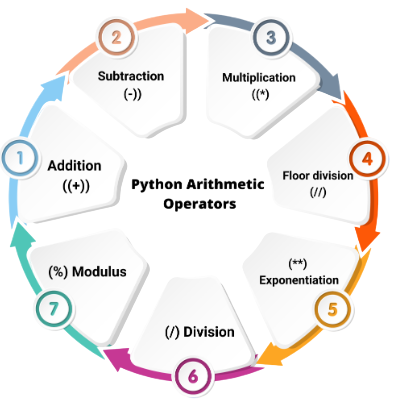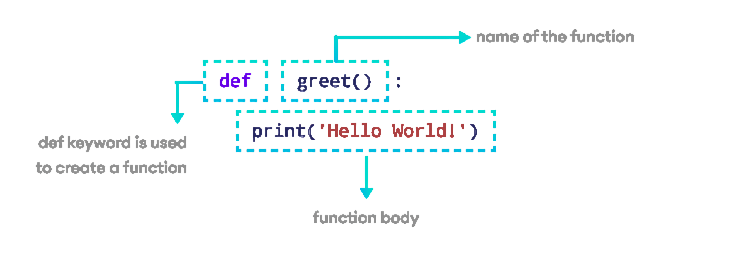
- Planning a Calculator Project
- Basic Arithmetic Operations
- Input and Output Handling
- Using Conditional Statements
- Creating Functions
- Error Handling
- Looping for Reuse
- GUI Calculator with Tkinter
- Conclusion
Planning a Calculator Project
Creating a calculator in Python is a rewarding project that helps reinforce fundamental programming concepts. Before diving into code, the planning phase involves deciding the type of calculator command-line based or graphical user interface (GUI). Identify the necessary operations your calculator should support, such as addition, subtraction, multiplication, division, modulus, exponentiation, and square root. Planning also includes deciding whether to use a procedural or object-oriented approach and considering how user-friendly the interface should be. This step ensures a smoother development process and provides a roadmap to follow. Planning is a crucial step when developing a calculator project, Python Training as it sets the foundation for a well-structured and functional application. The first step is to define the scope and features of the calculator. Decide whether it will be a simple calculator handling basic arithmetic operations like addition, subtraction, multiplication, and division, or a scientific calculator with advanced functions such as trigonometry, logarithms, and exponentiation. Next, choose the platform and tools whether the calculator will be a console application, a graphical user interface (GUI) app using libraries like Tkinter, or a web-based tool using frameworks such as Flask or Django. This decision impacts the design and implementation approach. Sketch the user interface (UI) layout, focusing on usability and clarity. Plan how users will input numbers and operations and how results will be displayed. Define the program flow, including how input will be processed, calculations performed, and errors handled, such as division by zero or invalid input. Design the project with modularity in mind breaking down the calculator’s functionality into functions or classes to make the code more organized, reusable, and easier to maintain. Finally, set milestones and testing plans to verify that each feature works as expected. Proper planning helps ensure the development process is smooth and results in a reliable, user-friendly calculator.
Interested in Obtaining Your Python Certificate? View The Python Developer Course Offered By ACTE Right Now!
Basic Arithmetic Operations
Every calculator should handle basic arithmetic operations. In Python, this includes addition (+), subtraction (-), multiplication (*), and division (/). IT Engineer Salary in India Defining these operations as separate functions promotes reusability and code clarity:

- def add(x, y):
- return x + y
- def subtract(x, y):
- return x – y
- def multiply(x, y):
- return x * y
- def divide(x, y):
- return x / y if y != 0 else “Cannot divide by zero”
These functions form the core logic of the calculator and can be invoked based on user input. They can also be tested independently, which is helpful during debugging.
Input and Output Handling
Input and output are crucial in any interactive application. Python’s built-in input() function can be used to gather data from the user. Backend Development To ensure smooth operation, convert inputs to a float or integer format:
- num1 = float(input(“Enter the first number: “))
- operator = input(“Enter the operation (+, -, *, /): “)
- num2 = float(input(“Enter the second number: “))
The calculator should validate that the input is numerical and that the operator entered is among the supported ones. Output is handled using the print() function, which communicates the result back to the user.
Gain Your Master’s Certification in Python Developer by Enrolling in Our Python Master Program Training Course Now!
Using Conditional Statements
Conditional logic in Python allows the program to Web Developer vs Software Developer decide which arithmetic operation to perform. The if-elif-else structure is useful here:
- if operator == “+”:
- print(add(num1, num2))
- elif operator == “-“:
- print(subtract(num1, num2))
- elif operator == “*”:
- print(multiply(num1, num2))
- elif operator == “/”:
- print(divide(num1, num2))
- else:
- print(“Invalid operator”)
This pattern provides a Python Training straightforward way to route the user’s input to the correct function and can be easily extended with more operations.
Creating Functions
Creating Functions are essential for structuring a program. They encapsulate logic, making the code modular and easier to maintain. Remove Duplicate Elements Beyond basic arithmetic, you can add more functions:

- def modulus(x, y):
- return x % y
- def exponentiate(x, y):
- return x ** y
- def square_root(x):
- return x ** 0.5
You may also create a function that handles the overall flow of the calculator, accepting inputs and invoking the appropriate arithmetic function.
Are You Preparing for Python Jobs? Check Out ACTE’s Python Interview Questions and Answers to Boost Your Preparation!
Error Handling
Robust programs handle unexpected situations gracefully. Error handling in Python is done using try-except blocks. This prevents crashes and improves user experience:
- try:
- num1 = float(input(“Enter first number: “))
- operator = input(“Enter operator: “)
- num2 = float(input(“Enter second number: “))
- if operator == “/” and num2 == 0:
- raise ZeroDivisionError(“Cannot divide by zero”)
- except ValueError:
- print(“Invalid input. Please enter numeric values.”)
- except ZeroDivisionError as e:
- print(e)
Handling specific exceptions ensures the calculator reacts appropriately to user mistakes Call a Function in Python.
Looping for Reuse
To allow users to perform multiple calculations without restarting the program, implement a loop:
- while True:
- calculator()
- choice = input(“Do you want to continue? (yes/no): “).lower()
- if choice != “yes”:
- break
This approach improves usability and aligns with how real calculators operate. The loop can be paired with a menu interface for selecting operations.
GUI Calculator with Tkinter
For a more interactive experience, Throw and Throws Java you can build a GUI Calculator with Tkinter using the tkinter library. Here’s a simple example:
- import tkinter as tk
- def click(event):
- global expression
- text = event.widget.cget(“text”)
- if text == “=”:
- try:
- result = eval(expression)
- input_var.set(result)
- expression = str(result)
- except Exception as e:
- input_var.set(“Error”)
- expression = “”
- elif text == “C”:
- expression = “”
- input_var.set(“”)
- else:
- expression += text
- input_var.set(expression)
- expression = “”
- window = tk.Tk()
- window.title(“Calculator”)
- input_var = tk.StringVar()
- entry = tk.Entry(window, textvariable=input_var, font=”Arial 20″)
- entry.pack(fill=”both”)
- buttons = [“7”, “8”, “9”, “/”, “4”, “5”, “6”, “*”, “1”, “2”, “3”, “-“, “0”, “C”, “=”, “+”]
- frame = tk.Frame(window)
- frame.pack()
- for i in range(0, len(buttons), 4):
- row = tk.Frame(frame)
- row.pack()
- for j in range(4):
- b = tk.Button(row, text=buttons[i+j], font=”Arial 18″, width=5, height=2)
- b.pack(side=”left”)
- b.bind(“
“, click) - window.mainloop()
This GUI application allows users to interact with the calculator using buttons instead of the keyboard.
Conclusion
Building a calculator in Python is a great way to learn and apply programming fundamentals. It involves variables, functions, control structures, error handling, and modularization. Extending the calculator with advanced operations and a GUI provides additional practice with libraries like tkinter. This project can be tailored to suit beginners learning the basics or experienced developers exploring application design and GUI development. Whether as a console-based app or a full-fledged desktop utility, Python Training creating a calculator helps build problem-solving skills and prepares you for more complex projects in Python.Planning a calculator project thoroughly is essential for creating a functional and user-friendly application. By clearly defining the scope, choosing the right tools, designing an intuitive interface, and organizing the program structure, developers can build an efficient calculator that meets user needs. Breaking the project into manageable parts and anticipating potential errors ensures smoother development and easier maintenance. Ultimately, careful planning lays the groundwork for a successful project, whether it’s a simple arithmetic calculator or a complex scientific tool.





